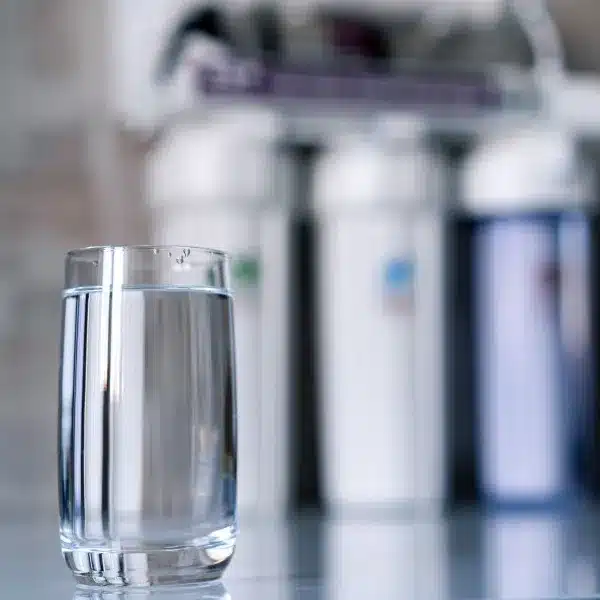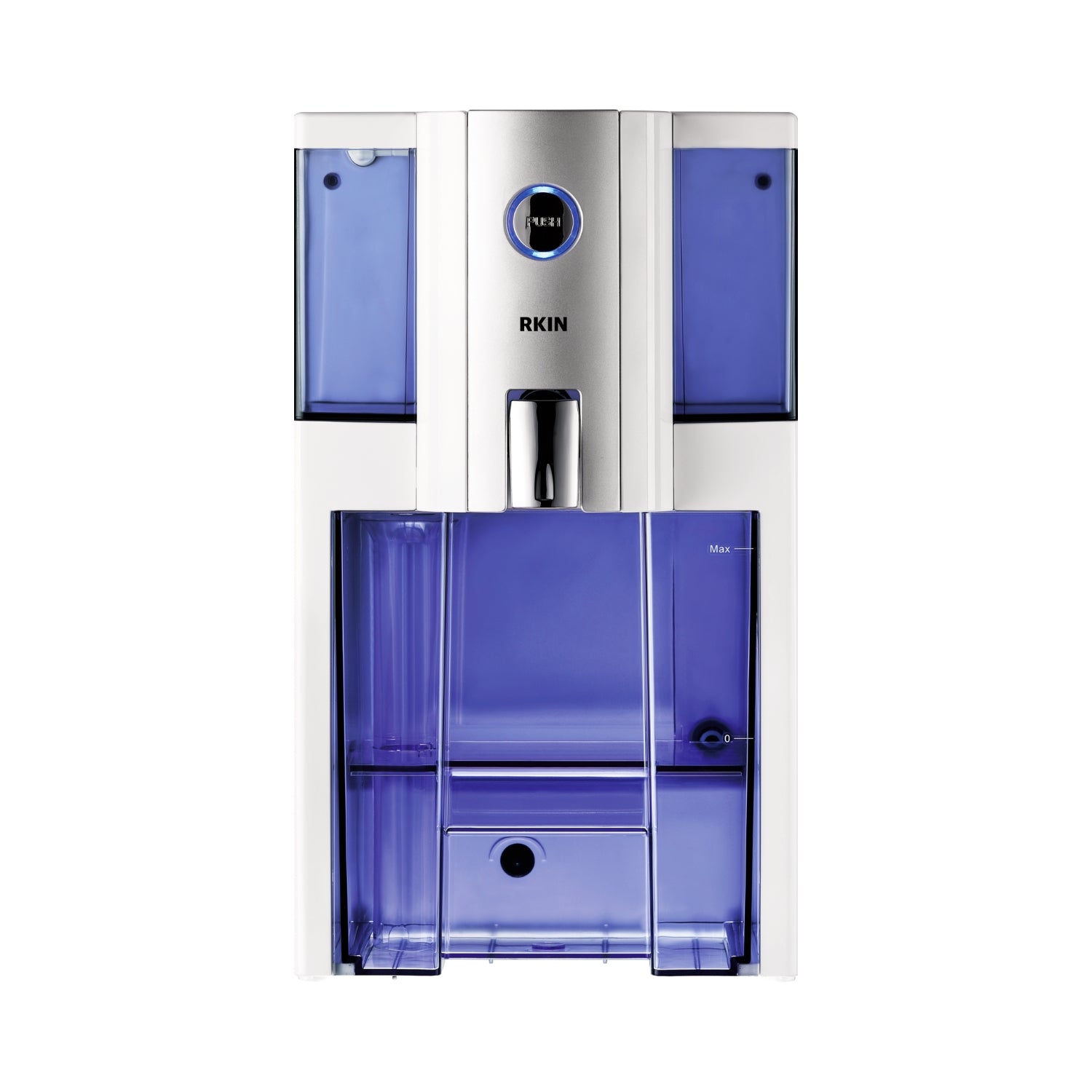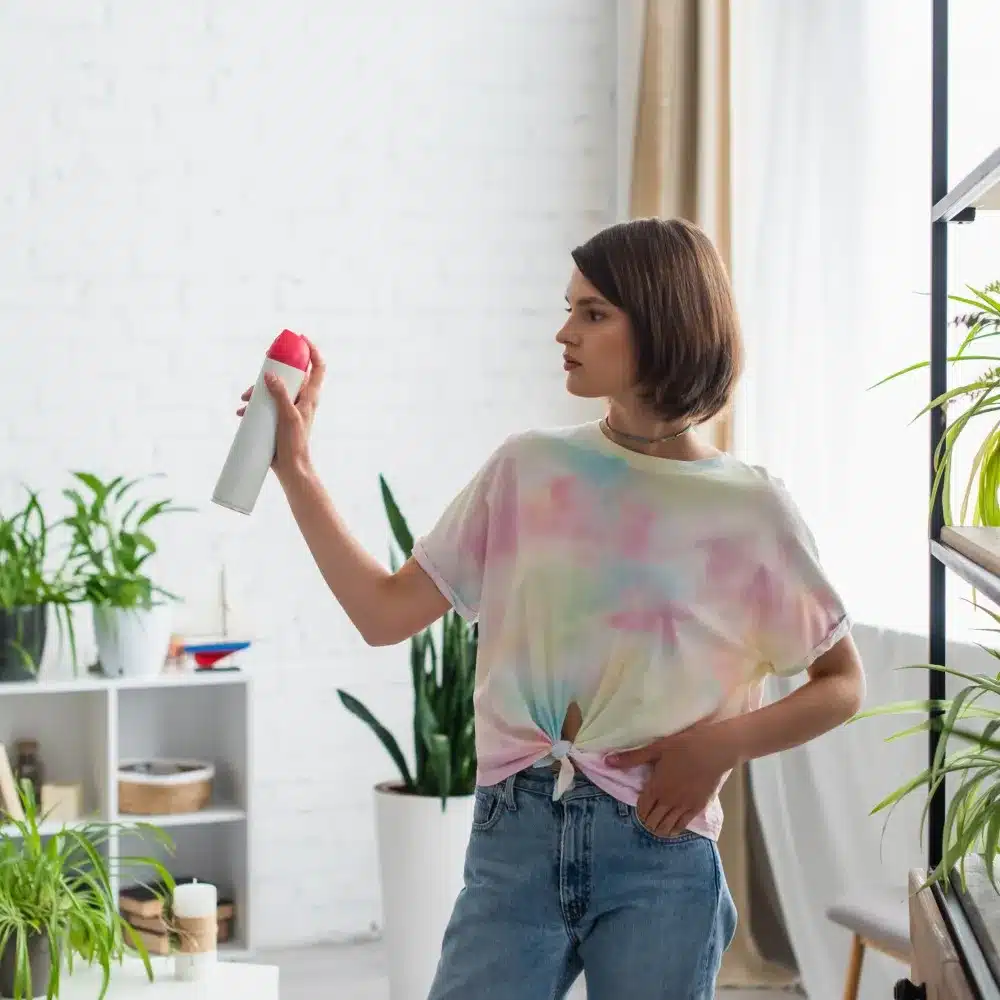How to Choose the Best Water Filter System
Written by:
John Goss
02/22/2016

Updated: 04/12/2024
Looking for a different guide? Browse them all HERE.
Even in places with “good water,” what comes out of our faucets is often contaminated with a wide range of toxins, heavy metals, and trace pharmaceuticals.
The sheer volume of water-treatment options is staggering. We offer only a limited number of filtration systems in our online store because most folks need only one of a few options. We see no need to make things more confusing!
In this post I’ll tell you what you want to get out of your water, and then four filter options that will do that.
What You Want to Get Rid of
The main things we want to get out of our water are as follows:
1) Chlorine
Chlorine is used to kill many biological agents, including bacterias like cryptosporidium, giardia, and cyclospora. Chlorine is incredibly effective, but chlorine in drinking water is implicated a wide variety of health problems, from cancer and heart disease to reproductive problems and more.
2) Heavy Metals
Lead, cadmium, arsenic, chromium, mercury, and more easily bio-accumulate in our bodies and can cause serious long-term health problems.
3) Pharmaceuticals
This is a relatively new source of toxins now found in water supplies throughout the world. Pharmaceuticals pass though those who take them and are eliminated through our urine. They are flushed and later show back up in drinking water.
4) Industrial products/byproducts
DDT, Dioxins, Percholate, Hexachlorobenzene, MtBE, PCB’s, Chromium VI and many others can now be found in the water of many towns.
5) Radioactive elements
These are now showing up in some locations. If you have them, you should of course filter them out. This usually requires reverse osmosis technology.
6) Fluoride
There is robust debate over the use of fluoride in drinking water. Some believe it to be okay while others can point to studies suggest it is a potent neurotoxin. There seems to be science that lends validity to both sides of the discussion, but recent studies do suggest that fluoride may be harmful. We choose to filter the fluoride from our water, but we understand that others might take a different view, which is why we offer a filter option that leaves the fluoride in place.
If you want to know what contaminants are in your water, you can test your water with this kit.
How to Choose the Best At Home Water Filter
Obviously, we’d all like to enjoy the best water quality possible, but the world of water-filter technology is confusing to navigate. Our readers often ask: How can I quickly learn what filter is best for my family’s needs? How can I be sure the filter I bought is doing what it claims to be doing?
I’ve been researching (and testing!) various types of water filters for decades now, so I’ll try to provide you with my understanding of this issue, and help you choose the best water filter for your family.
Types of Water Filters
The most widely available and effective water filters are as follows:
- Carbon/activated carbon filters: Activated carbon chemically bonds with and removes some contaminants in water that is filtered through it. Some carbon filters just remove chlorine and improve taste and odor, while others remove a wide range of contaminants including lead, asbestos, mercury, and volatile organic compounds (VOCs). Activated carbon cannot effectively remove common “inorganic” pollutants like fluoride, arsenic, nitrate, hexavalent chromium, and perchlorate.
There are two types of carbon filters:
a. Granulated activated carbon (GAC) filters: These filters contain fine grains of activated carbon. Typically, they are less effective than carbon block filters (see below) because they have a smaller surface area of activated carbon.
b. Carbon block filters: Carbon block filters are made from pulverized activated carbon that is compressed into blocks. They are typically more effective than granulated activated carbon filters because they have more surface area. - Ceramic filters: These do not remove chemical contaminants, but they have very small holes throughout the material that block solid contaminants such as cysts and sediments.
- Kinetic degradation fluxion (KDF) filters: KDF is a combination of copper and zinc. It creates an electro-chemical reaction. During this reaction, electrons are transferred between molecules, and new elements are created. Some harmful contaminants are changed into harmless components. Some heavy metals–such as copper, lead, mercury and others–react to plate out onto the medium’s surface, thus being effectively removed from the water supply.
- Distillation: Water is distilled by boiling it and capturing the steam. The steam cools back into water. Many substances are left behind and the resulting water is purer. Unfortunately, most of the dissolved beneficial minerals are absent in distilled water. Also, many feel that distilled water is considerably more caustic and will rob minerals from our bodies. Although this topic is robustly debated, we feel that this technology is not a good solution for filtering water when there are so many better, and less expensive, solutions.
- Mechanical filters: These filters have tiny holes that remove contaminants such as cysts and sediments. They cannot remove chemical contaminants. They filter essentially the same things that ceramic filters do.
- Reverse osmosis filters: This process pushes water through a semi-permeable membrane that blocks particles larger than water molecules. Reverse osmosis can remove many contaminants not removed by activated carbon, including arsenic, fluoride, hexavalent chromium, nitrates, and perchlorate. However, reverse osmosis does not remove chlorine, trihalomethanes, or volatile organic chemicals (VOCs). Many reverse osmosis systems include an activated carbon component than can remove these other contaminants. Quality can vary tremendously in both the membrane system and the carbon filter typically used with it. Consumers should also be aware that reverse osmosis filters use 3-to-20 times more water than they produce. They waste quite a bit of water. One exception is this RO filter.
There are other types of water filtration methods out there, but the above technologies are usually the simplest and most cost effective ways improve the water quality in your home.
What About Charcoal Filtering Bottles?
Activated carbon is a great filter medium, but usually water is forced through the charcoal by the pressure in the system. When you just drop a stick of charcoal into your water bottle and head off to yoga, there is simply not enough time for any significant filtration to occur.
Choosing the Best Water Filter
We offer two basic types of filtration systems in our store because we believe these are the best water filters.
- KDF/GAC/carbon block filtration. These filters take care of most of the contaminants found in municipal drinking water, including PFAS chemicals. This model includes an optional fluoride filter. Requirements: A hole in your countertop. Do you live in a city? If so, you should invest in a pre-filter for your system.

Gimme Clean Water – Under Counter Water Filter System with PFAS/PFOA (Forever Chemicals) Filter
This filter system is installed under your counter, out of sight, and uses KDF/GAC and carbon block filters to effectively eliminate a wide variety of common contaminants. The additional PFAS water filter uses bituminous granulated activated carbon to remove PFAS from your water.
- ZIP Countertop Reverse Osmosis filter system. These filters are perfect for folks who cannot put a hole in their countertop and/or have the modern type faucet that will not connect to the KDF/GAC/carbon block countertop unit. They are also great for folks who may have radioactive elements in their water.

Zero Installation Purifier Countertop Reverse Osmosis Water Filter from RKIN
This Countertop Reverse Osmosis Water Filter transforms ordinary tap water into pure, healthy, and delicious drinking water.
A Word About Reverse Osmosis (RO) Filtration
RO does a great job filtering water of just about everything. One of the downsides is that RO traditionally wastes 4-5 times as much water as they produce. The ZIP limits the amount of waste-water and even stores it in a special chamber so that it can be used elsewhere in the home (we use ours to water plants). RO filtration also removes beneficial dissolved minerals, so care should be taken to be sure that your diet contains these trace minerals. For most of us that is not a problem.
What About a Berkey Filter? We get so many questions about Berkey. And while these filters are certainly better than no filter at all, they should not be confused with a robust carbon block water filter. Berkey employs a small carbon filter in their units, which will reduce (but not elimintate) various toxins in your water and make your water taste better. The Berkey filter cartridges also need to be replaced more often that the cartridges in a bigger filter that is installed onto your faucet.
Does Your Water Filter Work?
So how can we know if a particular filter manufacturer is producing effective water filters?
There are independent testing agencies that test contaminated water after it has passed through a test filter. If the filter removes all, or nearly all of the specified contaminants, it qualifies for certification. One of the best certifications is the NSF 53 Protocol. Filters that show positive results are granted certification and can be trusted, in my opinion.
The Best Water Filter for Your Bathroom
Finally, it should be noted that chlorine (found in most water supplies) is as easily absorbed through our skin as it is through our stomach. Chlorine can also become a gas when heated and thus get into our lungs when taking a steamy shower. To prevent this, it’s worth considering a shower and/or bath filter.
More Information About Chromium 6
We get a lot of questions specifically about this one, so here’s the bottom line on this toxin:
- Chromium-6 is really bad stuff–a well-established carcinogen.
- California has set a maximum legal level of 10 micrograms per liter of chromium-6 (this translates to roughly ten part per billion (10ppb)). This California level is the most stringent anywhere, but they’ve set the more ambitious public health goal of .02ppb. The EPA, by the way, lacks a specific limit for chromium-6, but has set a standard of 100ppb for all forms of chromium.
- Some level of chromium-6 may be in the drinking water of two-thirds of Americans. While this is the news grabbing headlines, it’s worth noting that only 2 percent of Americans’ drinking water contains levels above 10ppb, which is still some seven million people. (You can check your area here.)
Does the Gimme Clean Water Filter Remove Chromium-6?
The KDF/GAC filters in our store indeed capture chromium hexavalent. Whew!
The testing data shows that when water passes through our filter system, the chromium-6 is reduced by at least 90 percent. In my case, this means that my New York City water, which is estimated to contain .04ppb of chromium-6, should be reduced down to .004ppb.
When water spiked with high levels of chromium-6 goes through these filters, those levels drop to exactly the same level as the California law requires. This is great, but I was happy to discover that the testing is done on filters that have already filtered 20,000 gallons of water. In other words, because we recommend that those filters be replaced after about 5,000 gallons (every year or two), the filters that were tested should have been discarded years ago, but were still functioning very well, even with large amounts of chromium-6 dumped into them. This means that if you live in an area already below California’s legal limit for chromium-6 (as 98 percent of you do), and if you replace your filter every year or so, your exposure to chromium-6 via your drinking water should be negligible–at least 90 percent lower than the unfiltered water in your area.
If you are using a different water filter, you should definitely contact the manufacturer to be sure it is reducing the chromium-6 level down to 10 micrograms per liter or less, and ideally down below .02ppb.
Stay sane,


John, Certified Holistic Health Coach
Note: This article contains affiliate links or sponsored content, which means that if you make a purchase, we may earn a commission. We only recommend products that meet our strict standards for non-toxicity and that we use (or want to use!) ourselves. Thank you so much for supporting the brands that make Good Stuff!
Enjoying this guide?
Join 60K families who rely on our free guides on everything from milk to mattresses! Sign up to get $5 off your first order, access to our ultimate Clean Products Cheat Sheet, and ongoing exclusive access to coupon codes and promotions. Our weekly newsletter is filled with well researched tips and tricks to live a toxin-free lifestyle.
Related Posts
Non-Toxic Sunscreen Guide
Non-Toxic Air Freshener Guide
Best Prenatal Vitamin Guide
What Is the Best Non-Toxic Cutting Board?
-
We’ve been using your water filter for over 4 years and love it! I’m wondering if we should replace the plastic water lines going to and from the filters? Do you sell replacements?
-
Thank you for explaining about ceramic filters. I’ve been wondering what kind of water filter we should use. It seems like we have a lot of options, but this one seems like it could be good for what we need.
-
Hi, Thanks so much for all your amazing info!
Question, would you suggest remineralizing R.O. water? If so, with what?Thanks! Alison
-
Hi,
Can you recommend a water filter system for the entire house?
Thank you
-
What about minerals in filtered water?
Do you add some after filtration? (especially magnesium and calcium)-
I also have a question about minerals. I live in Phoenix, and we have hard water, which I don’t mind for drinking. Do the 2 and 3-stage filters remove all minerals?
-
-
Do these filters have to be replaced or have parts that need to be replaced? And if so how often?
-
What is your take on refrigerators that have their own water filters?
-
Hello there!
I just moved into a new house, and the water is so terrible that it colours tubs and clothing orange over time due to accumulation. Could you suggest a filter that would help to fix this poor situation? Thank you ahead of time!
-
-
Yes I did. I’ve bought Berkey water filter after reading a lot of reviews about this and it seems that filter works great. My water becomes cleaner and tastes better.
-
Hi there!
I’ve just moved to the new house and the water there is so bad that it turns tubs and clothes orange due to buildup over time. Could you recommend a filter that can improve this bad situation? Thanks in advance!-
Hi David, Sorry for your water problems. Have you had it tested for Hard Water?
-
-
We have the Kangen Leveluk K8 machine (https://www.enagic.com/?c=product-k8). It’s getting old and looking to replace it… any thoughts on this Kangen machine? We like it because it’s changes the pH so we’re drinking pH 9.5 water. If not recommended, what would a good replacement?
Thanks in advance!
Margaret Virginia Suazo -
I am looking to get distilled water from my kitchen faucet for a humidifier
-
You cannot get distilled water from a faucet. Distilled water is essentially water caught from steam. You can either purchase a distiller or you can buy distilled water at most supermarkets.
As an aside…I do not recommend that anybody ever make a habit of drinking distilled water. While it is very pure, it is not good for human consumption.
-
-
Nowadays probably everyone knows how important it is to drink water. But of course, the water that you consume and use daily should be filtered and harmless for your health.
It is not the easiest tasks especially when you live in a megapolis where the sanitary standards of water are relatively lower.
6 Types of modern water filters https://cookingtopgear.com/types-of-modern-water-filters/
-
Like several others, we are building a house, and I am hoping a whole house system can be effective to ease the process of filtering everything! Any thoughts would be very helpful! Also, I was researching faucets for the same reason, and got onto the topic that some faucets can leach lead, even though they are certified due to the “easy” water that they use in the process. I am definitely down a rabbit hole there, but do you know anything about that topic? Does filtering the water help reduce any leeching? I started to get that feeling of I can never win, if I filter the water, only to have it come through the tap and pick up lead! Any thoughts are most helpful – I do know there were some changes in regulations that were supposed to help with this with the composition of the metal and perhaps the manufacturing technique reducing the potential for lead. Finally, on another tangent, I found that there are many certifications faucet manufacturers need to get, and some have only the basics, where others have all of them …. did you look into any of this when you were doing your Lancaster house remodel and have any potential tips? Thanks for your site! I knew Maia when we were in NYC! Miss it there very much!
-
Hi Poppy,
John here…
We can help you with the “rabbit hole” problem. 🙂A whole house air filter (and water filter) system can make a big difference. I can help you with that stuff. Because it’s a big subject it might be best to get into that stuff directly via email. john@gimmethegoodstuff.org
PS I can also help you with the faucets.
-
-
Hi! Thanks for all the info. If I did want to invest in a whole-house filter, can you recommend one?
Thanks!
-
Which filtering system would best remove haloacetic acids?
-
With the wide variety of water filters available, you need to be sure that your filter is making the cut. Otherwise, you could easily fall ill or see some other detrimental effects.
-
I appreciate how you clarified that carbon filters can remove lead, asbestos, mercury, and VOCs. My mom moved to a new location and she would like to look into water lead removal. Perhaps a carbon filter would be a good place to start looking for options.
-
Can you recommend a whole house filter?
Thanks!
-
Hi John and Maia,
Really appreciate the time and effort you guys have put into your blog. it’s a treasure trove of information. Regard the water filters, I wondered whether a whole house filter would be as effective. If so, can you recommend a brand/line. Thank you!
James
-
My wife and I have been thinking about getting a water system installed in our house, but we weren’t sure how to choose the right one. I love that you say to go for a 2 stage filter because they actually get rid of different types of minerals! It would be nice to know that you aren’t going to drink minerals that could potentially make you sick.
-
We live in Phoenix, AZ and have the worst drinking water in the. nation due to very high levels of chromium-6. I may have missed it on your website, but I can’t see which filter system you recommend for this. Is reverse-osmosis the only thing that will filter out the chromium? I hate the idea of wasting so much water here in the desert with an RO system. Maybe buying drinking water is our only option? Thanks!
-
Thanks for the questions re: Chromium 6 in your water.
The short answer is that you do not need a reverse osmosis filter to remove Chromium 6 , and a very wide swath of other harmful chemistry and biologicals from your water.Our two-stage and 3-stage filter systems do a very good job.
NSW 53 test results show a huge reduction in Chromium VI.
These tests are started only after the filter has already had 20,000 gallons of water run through it! They only fail after over 28,000 gallons had been run through them! That is very very good.Filter cartridges always perform best at first, but over long periods of time (years) they begin to be less effective. We recommend that you change filter cartridges every 5000 gallons (about 1-2 years).
This means that the test results are for a filter that should have been retired about 5 times!These filters are VERY effective.
I would not depend on bottled water to supply me and my family with drinking/cooking water. Bottled water is often just tap water from a nearby municipal system…even when the term “Spring Water” is used. It is every bit as likely to contain unacceptable levels of Chromium VI as your tap water.
Our filter systems can be found here…
https://gimmethegoodstuff.org/?s=water+filter
Scroll down to see the options.
-
-
Hi John! This is a very helpful tips on choosing what water filter to buy. That “Types of Water Filters” part is really informative. Thank you for this knowledgeable post.
-
Hi there-
I just found out we have lead in our water and need to find a filter for our private well system. I don’t think the filters you carry are for private wells. Can you tell me the name of the manufacturer? Thank you!
-
We have filters for private wells that absolutely filter for lead and many other chemical and biological contaminates.
Feel free to contact me directly at john@gimmethegoodstuff.org and I can walk you through the process.
Best,
John
-
-
I am not very familiar with the NSF certification, so I just have a quick question! Above it states the filters are NSW protocol 53 certified in the section “So what filter should you buy” paragraph 2. Other places you say NSF protocol 53 certified. Is the “W” in NSW just a typing error? Like I said I haven’t done any of my own research on this yet, so I wanted to ask if it was a different thing!
Are your shower filters NSF 53 protocol certified as well? Are the filter replacements for the shower filter the KDF ones available on your website under the other filter replacements, or are those KDF replacements for the kitchen filters? If not, where would I purchase a replacement for the shower filter when needed, or do you replace the whole thing?
Thank you!
-
Hi Lauren,
Oooops! Yes, there is a typo! Thanks for catching it. It should read “NSF”.The shower filters are not tested to NSF 53 protocol because they are essentially there to catch chlorine, for which they are tested at another facility and at which they do quite well.
Along the way they do filter lots of other things from the water, but because they are filtering hot water rather than cold, all sorts of things change. Most water filters are not meant to filter hot water. It is, however, important to filter shower/bath water because when chlorine in water is heated it becomes a gas and as we shower we can breathe in quite a bit of chlorine in gas form…NOT GOOD!We can replace any of the filters for any of the units we sell. I believe they are on our website, but I’ll double check.
Best,
JohnThanks for the questions.
-
-
Do you have the performance data sheets for the water filters you carry available?
-
Hi Kary,
John here…
You and I have discussed this via email, but it is such a good question in light of new data about Chromium VI, that I hope you don’t mind if I address it in an open forum. We love sharing good questions…For the rest of you….Kary emailed me today with good questions about our water filter technology. She had spotted the startling news regarding Chromium VI being found in many US water supplies. (Chromium VI is the chemical culprit in the film “Erin Brockovich”).
I’ll admit to thinking that since Ms Brockovich successfully sued the folks who were dumping this toxin, and since it was so widely publicized, that it was no longer of concern to most of us. Boy was I wrong!
This is from the CNN website…“But this new analysis from the Environmental Working Group, an independent advocacy group, examines evidence from water systems throughout the nation and concludes that the tap water of 218 million Americans contains levels of chromium-6 that the group considers dangerous.”
That got my attention and it got Kary’s attention too! Several months ago Kary had purchase one of our water filtration systems for her home, and today she contacted me wondering how well her new filter system did against Chromium VI.
Happily I was able to show her an independent lab report showing that our KDF/GAC filter reduces Chromium VI by 93%. This means that if water going into the filter has 3 times the EPA allowed amount of Chromium VI, the water coming out of the filter system will have just 0.01 PPM (Parts per million).
So what does that mean? California is proposing what will arguably be the world’s most stringent regulation of Chromium VI in water. The level they are proposing is 0.02PPM. This is less than one half of what the EPA now allows. Thank you California!So I think that Kary and I can both breathe a bit easier knowing that our filter systems result in only 1/2 of the very strict California allowable levels of Chromium VI. .01 is half of .02
Thanks Kary for your concern…good on you!
If, like Kary, you are concerned about the quality of the water you drink and bathe in, you can go to our site to see our water filter systems.
https://gimmethegoodstuff.org/?s=water+filterAlso, please feel free to contact me directly if you have specific questions.
Best
-
-
I am wondering if there is a whole house filtration system that you would recommend? Otherwise I’m thinking of getting a whole house reverse osmosis and then adding the filters you sell here like the bath ball etc to make sure I get all of the contaminants out, what would you recommend? Thank you so much:)
-
Thanks for your nice explanation.
Very Helpful Post, Thanks for Sharing 🙂 -
For living in this world, there is no alternative of water for the body to save a life. Water is a must to run the body. Water aids to run the body properly and helps to do all the functions well. Water is very essential for the cleansing system. Now the medical association has found that the body needs water to maintain the normal function of the body. Our body is made of mostly 70% of water. If we analyze the amount of water in our body we find that in blood the amount is 80%, in the brain, this is 75% and our main filter named liver is 96% water. You badly need to choose the best reverse osmosis system to fulfill the requirement of lives. Further more visit here- http://www.ewaterpurifier.com/buying-guide-best-reverse-osmosis-system-2016/
-
Hi John,
When the time comes for me to change the fluoride filter do we just email you since this is not on your product shopping list or do you plan to add these items per Graciela’s above comment?
Thank you,
Theodora -
I’m trying to understand the difference between your three stage water filter and the water filter I currently have which is a single filter that incorporates five stages in one housing. Its spec sheet claims this:
“The system conforms to NSF/ANSI 42 and 53 for specific performance claims as verified and substantiated by test data.”-
Hi Deborah,
John here…
Without knowing the exact filter you are using, the short answer is that a single 5 stage filter must try to “clean” the water with smaller amounts of each filter medium. This means that the water is exposed to each filtering medium for less time.
Depending on the medium, this may or may not effect the percentages of “pollutants” that are filtered.
With larger, dedicated filters, the effectiveness can increase and the filter cartridges ca last much longer.
-
-
I wasn’t aware that reverse osmosis was a big water waster – that is a big downside for sure. Great information on different filtration methods, thanks for sharing!
-
Thank you for the great information. We are renting a home in the DC area and the water here is very hard. Installing a water softener is not an option. Our baby has eczema and the more I bathe her, the worse her rash gets. All of us have very dry skin as well. Will the shower filter remove the minerals that are irritating and drying our skin?
Thank you!
Carolyn -
Hi Patricia,
John from Gimme the Good Stuff here…
If by “effective” you mean: the most filtration for the least cost, then I suggest our 3 stage filter. This is what we all use in our homes.
It is available in both countertop and undercounter configurations and does a great job filtering a huge swath of the most common biological and chemical impurities/toxins while leaving the beneficial minerals intact.
They install easily, are reasonably priced, and filter a lot of water before the need to replace filter cartridges… which are also reasonably priced and easy to replace.
Feel free to contact me directly at john@gimmethegoodstuff.org.
I’m happy to offer further guidance. -
That is cool that these water filtration systems are kind of like how our cells filter water in and out. I mean the names of the water filtration methods are even the same. I want to see what a semi-permeable membrane looks like in a filter. Out of all of these methods which one do you think is the most effective as a water filtration system?
-
Hi Graciela,
Here is where you can find the filter systems and prices…replacement filters run between $25 and $45 each.
You can purchase our 3 Stage Under-counter filter here: https://gimmethegoodstuff.org/store/under-counter-three-stage-water-filter/You can purchase our 3 Stage Countertop filter here: https://gimmethegoodstuff.org/store/countertop-three-stage-water-filter/
You can purchase the shower filter here: https://gimmethegoodstuff.org/store/shower-filter/
You can purchase our bath ball filter here: https://gimmethegoodstuff.org/?s=bath+ball
The filter cartridges in two of the three-stage should be changed every two to three years, depending on how much water you use. The fluoride filter is best to change annually.
We can supply you with the filter cartridges as you need them.
Let me know if you need any help placing an order.
-
Where can we buy the three stages filter, what is the price of this devise, how often the cartridges need to be changed and what is the cost of the replacements. Thank you
-
Do these filters significantly slow down the water pressure?
-
Hi Emily,
We get this question a lot. The short answer is no, these filters do not reduce water pressure. They will not effect the overall water pressure in a home any more than opening any faucet to the same flow might do.Thanks for the question!
-
-
Hello John,
I wish I would have known of this site and knew you sold filtering systems before we purchased ours. We’ve had it for almost a year now and after reading this I’m beginning to wonder if we made the right choice , please help! We have the aquasana OPTIMH2O™ REVERSE OSMOSIS + CLARYUM®. Your thoughts on this? Thank you so much in advance !!





Leave a Reply
You must be logged in to post a comment.